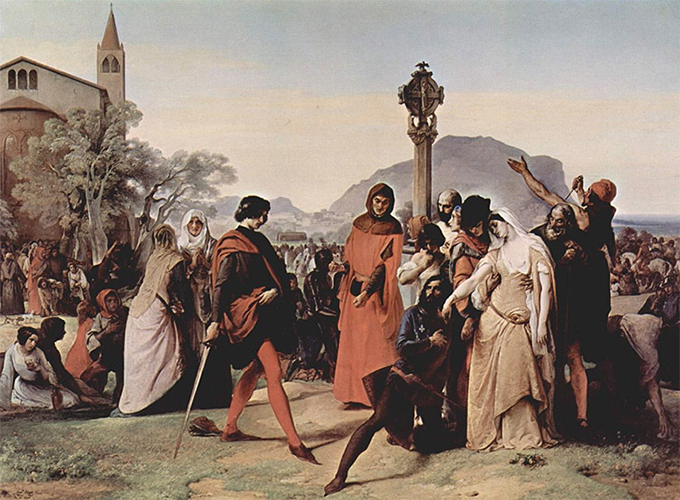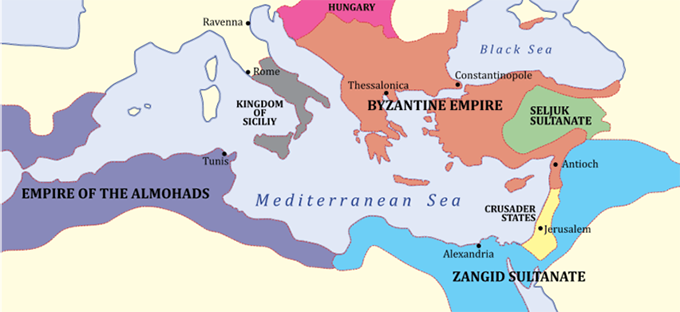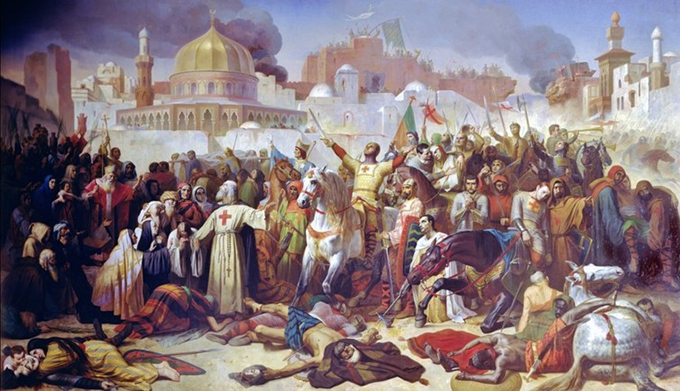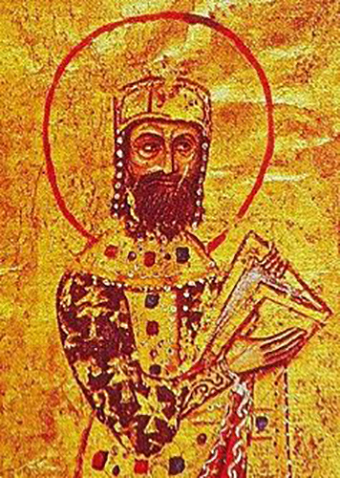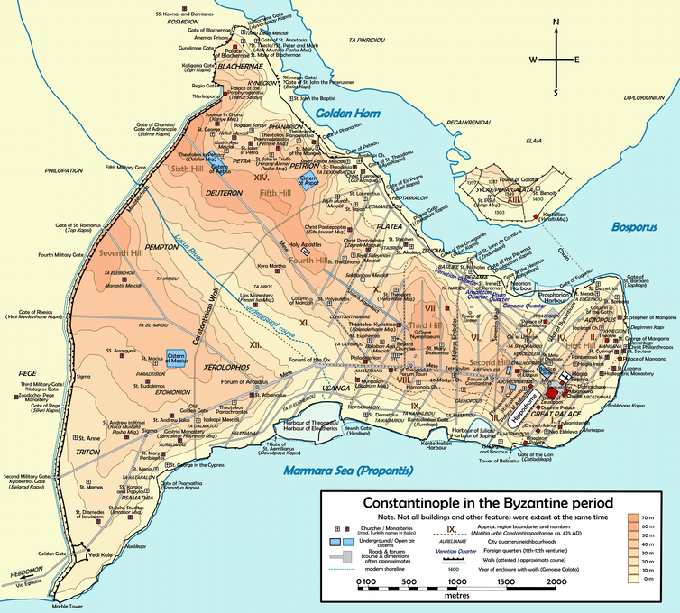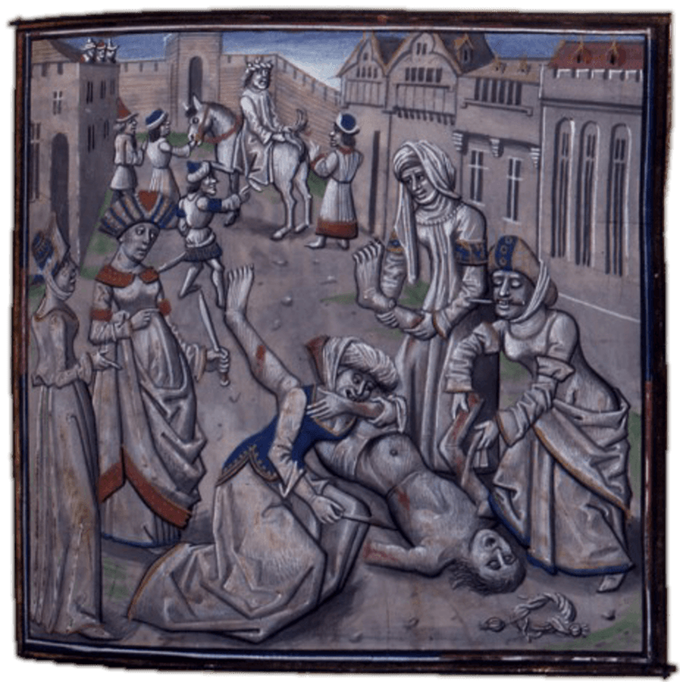The approaching Donald Trump presidency has taken quite a battering from historians. Comparisons have abounded with the 20th century’s greatest villains, including Adolf Hitler and Benito Mussolini, even if some have questioned how useful such parallels are.
But there is an era that lends itself rather closer to comparison than the tired fascist comparison. And it may have a far more useful message for us today.
Rise of a demagogue
Picture a superpower, once unquestioned, but now increasingly challenged by the rise of new powers. After political and financial crises, it tries to jumpstart its economy with international free trade, which, though it makes major cities and certain sectors of society very wealthy, also increases the strain on everyone outside these societal and geographical groups.
This leads to resentment towards both foreigners and elites, while those elites continue to focus on constraining rising powers abroad and, in particular, to extend their influence in the Middle East, the Balkans, and Crimea. This ends with the rise of a popular demagogue, who rules chaotically. But the people support him as they see his measures against foreigners and elites as justified in what they see as a broken system.
Sound familiar?
What will be less familiar is the setting: the 12th century Byzantine Empire (the surviving eastern part of the Roman Empire) during the Crusades. The outsider politician: an ageing prince named Andronicus Komnenos (1118-1185).
This is not a “warning from history”. The 2010s are not a rerun of the 1930s even if they share some similarities, and neither are we reliving the 1180s. But where events do not repeat, processes do.
Though these events contain horrors in the best traditions of a medieval caricature, so too one can see why people supported such a regime in spite of those horrors. And, in particular, to understand why people change course in such dramatic ways.
Early career
To describe the colourful man himself: Andronicus Komnenos was born around 1118, the grandson of an emperor. He was a prince, but far down the line of succession. He had two passions: his military career, and a series of high-profile seductions.
Andronicus’ record as a soldier bears more than a few similarities to Trump’s business career, in that he sold himself as hugely successful, but his actual record was mixed.
The Turks had taken the 23-year-old Andronicus captive in battle in 1141, but he was ransomed and came to the court of his cousin, the Emperor Manuel I Komnenos.
At court, Andronicus took up with his own niece, Eudoxia, making her his mistress, but they escaped her angry brothers when he was given military command in Cilicia in 1152. There, he failed to capture the rebel stronghold of Mopsuestria, was recalled and given another provincial command. But he appears to have left this one hurriedly as well, to avoid Eudoxia’s family.
At court, he was implicated in a plot against Manuel and imprisoned, but after escaping in 1165, Andronicus embarked on a grand tour of foreign courts, interspersed with short reconciliations with Manuel. He swanned into positions at court in Kiev, at Crusader Antioch and then Jerusalem.
At Antioch he seduced Philippa, sister of Manuel’s own wife Maria, compelling him to flee when Antioch succumbed to diplomatic pressure from Manuel to cease hosting this renegade prince. Andronicus was then welcomed in Jerusalem by King Amalric, who made him lord of Beirut, but then, at the age of 56, he seduced Amalric’s sister-in-law Theodora (who was also Manuel’s niece).
Andronicus then fled with Theodora to Damascus and the court of Sultan Nur al-Din. They moved on from there to Georgia. Though given estates and military command in Georgia too, in the late 1170s he was living on family estates by the Black Sea, where Manuel finally collared him. He was forced to submit to the emperor before being allowed to retire quietly.
His career may have ended here, were it not for the political situation when Emperor Manuel died in 1180, leaving ten-year-old Emperor Alexios II in charge, under a regency headed by Manuel’s widow, the western Empress Maria.
Political and economic turmoil
To understand the political climate, we need to go back to the crises of the late 11th century, which also echo modern times. The era was dominated by two previous geopolitical events: the Byzantine civil wars that followed the 1071 battle of Manzikert, which allowed Turks to occupy much of Anatolia, and the subsequent appeal of the civil war’s victor Alexios I Komnenos to the Papacy, which replied in the form of the First Crusade in 1097.
Well chronicled as these events are, there are comparatively fewer accounts of their results – politically, socially, or economically. Such a focus on the invasion itself and a comparative lack of interest in its fallout is equally something we can recognise as a typical historical error in these days of post-invasion Iraq and Afghanistan.
Similarly, the chaos that the mass movement of peoples across continents can cause is not something of which a modern audience needs much convincing.
In the wake of these events, the Emperor Alexios, his son John and his grandson Manuel, found the empire’s economic and political situation shot to hell. Many of its provinces were occupied by Turks and Normans, and far from the western Christians helping it reclaim lost territories, they set up Crusader States that opposed any return to imperial hegemony.
At the same time, new powers were rising: Vladimir Monomakh of Kiev ruled over an increasingly powerful “Rus” in the north; Serbs and Hungarians increasingly found their feet in the Balkans; and the arrival of the Crusaders encouraged various movements among the Islamic powers to repel them.
The Italian merchant republics – foremost among them Venice, Genoa and Pisa – began to operate vast trading networks across the Mediterranean. Meanwhile, the western European kingdoms of England, France and others took an increasing interest in what was occurring in the Middle East.To compete in this new world, Alexios allied himself with the rising commercial power of Venice. He granted it sizeable tax breaks from trading tariffs in exchange for a military alliance, while at the same time granting its people a district in Constantinople to call their own.
Tax breaks to Genoese, Pisan and other western merchants followed, and their presence appears to have enriched the imperial state treasury and cities across the empire. Cities became hubs of production and consumption, rivalling their classical Roman forebears. At the same time, the rural tax burden was increased to make up for the loss of traditional trading revenue.
Cities prospered while rural areas stagnated. The rural merchant was at a vast disadvantage both to his city-dwelling cousin, who gained tax breaks from trading with the foreigners, and, of course, to tax-free foreign merchants.
Andronicus rising
With this wealth, the Byzantine government focused on retaking its lost territories; Manuel pushed the empire through the Balkans to Croatia (1167) in the west while also attempting invasions of southern Italy (1155) and Egypt (1169). At the same time, the empire took on western cultural practices, with Manuel known to have held western European-style jousting in the ancient Hippodrome of Constantinople.
Constantinople became particularly cosmopolitan in this era. Italian merchants had their own quarters, as did Africans from Nubia; there were two rival Jewish communities; and the imperial bodyguard was composed of Vikings and Anglo-Saxons. Constantinople had a mosque for Islamic traders and prisoners of war, and Romany Gypsies are known to have entered the empire at this time.
There are many more examples, but overall the picture that emerges is familiar: cosmopolitan, affluent cities and a struggling countryside. And elites focused culturally and politically on global affairs, rather than local concerns.
So by 1180, we have a foreign Empress-regent in charge of an empire that has vast differences in wealth, a large foreign population in its cities, continuing challenges from abroad (especially with the rise of Saladin), and the new economic and political power of western Europeans.
After years of Manuel’s pro-western policies and military adventures, this situation led to rioting and civil unrest across the empire, such that in 1182 Andronicus (now aged 64) ended his retirement and marched on Constantinople with a small army.
He was allowed into the city by an admiral and a general, and immediately inflamed passions against elites and westerners in the city. This led to a bloody massacre of westerners in the streets, while Andronicus himself arranged the assassination of the young emperor after he had signed over power to him. Before this, the young emperor was forced to sign death warrants for his own mother, sister and the latter’s western husband.
Andronicus capped this off with marrying Alexios’ fiancée, the 12-year-old Agnes of France, daughter of the crusading French King Louis VII.
Bloody reign
Having taken power in so bloody a fashion, Andronicus did not completely break the wheel. His marriage to Agnes was an olive branch to the west, and in 1184 he compensated the Venetians 1,500 gold pieces for the massacre of their citizens and destruction of their property.
Despite this, he continued to persecute foreigners and the aristocracy. The people of the empire tolerated him because they saw the previous regime as corrupt and broken, even if Andronicus himself is likely to have acted mainly to eliminate rivals.
These measures began a vicious circle against his critics – real and imagined – as the harsher he got, the more rebellions broke out. He descended into paranoia, at one point blinding a bishop for supposedly not being able to see any rebels in his town.
In the end, his reign was cut short, after only three years, in 1185. His continuing purge of the aristocracy on slim pretences led one of his henchmen to try to arrest a nobleman called Isaac Angelos. But Isaac escaped, and fleeing to Hagia Sophia, he appealed to the people of Constantinople.
After three years of Andronicus’s cruelty and increasingly personal tyranny, despite his actions against the hated foreigners and elites, enough people wanted another change that rioting again broke out. When Andronicus returned from a military campaign, he found his son John had been murdered by his own troops and Issac had been declared emperor.
Andronicus was thrown to the mob and tortured publicly for three days, culminating in him being ripped apart by two western soldiers stabbing him by turns in the Hippodrome.
In the aftermath
Three years of Andronicus did immense damage to the empire: new states emerged from rebellions in Bulgaria, Serbia and Cyprus, and all control over the crusaders was lost. His successors were more focused on retaining their own power than holding the empire together.
One of them appealed to cash-strapped soldiers of the Fourth Crusade, promising money for military support. When he couldn’t pay, the crusaders sacked Constantinople and ended the empire that had ruled there since the fourth century. For those wanting all the gory details, I recommend Umberto Eco’s historical novel Baudolino, which chillingly portrays these events.
Though Andronicus’ reign was full of “medieval” horrors, the point here is how an outsider politician, with known serious flaws, was supported by a populace deeply disenchanted by government policies that had left a deep divide between affluent cosmopolitan elites and everyone else.
I am not arguing that we should watch out else there will be massacres of foreigners and the end of America; Trump is not Andronicus. But the situation that led to their rise is similar, and it is this lesson that we should learn from history.
In Act IV Scene I of Shakespeare’s play, Titus Andronicus, Titus’ brother says:
O, why should nature build so foul a den, Unless the gods delight in tragedies?
Neither then nor now is it “nature” that has “built so foul a den”. Historical contexts are built by people facing a certain set of circumstances. If we are to prevent future “tragedies”, and the rise of demagogues, we should look at fixing the processes that lead to them.
Author Bio: Maximilian Lau is a Postdoctoral Research Fellow in Byzantine History at Hitotsubashi University

